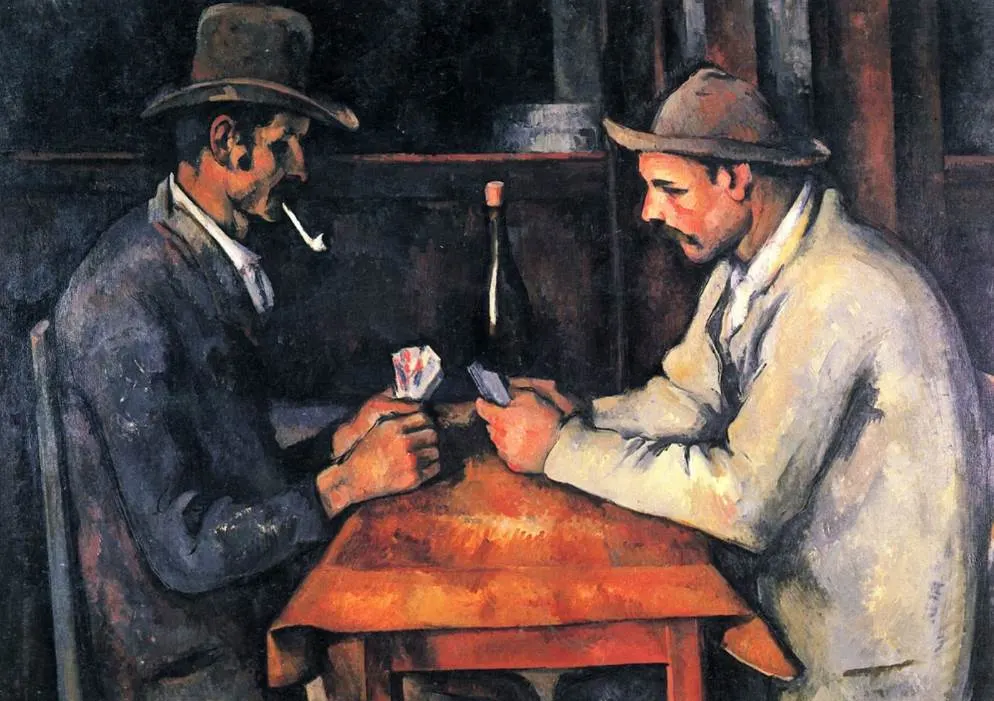One of the most renowned Post-Impressionist artists of the late 19th century is credited with forming a bridge between artists of former generations to those who shaped the world of modern art today.
Paul Cézanne (1839-1906) integrated small brushstrokes into his works that both make them easily recognizable and that inspired the Cubist artists of the following generations.
Let’s take a closer look at The Card Players by Paul Cézanne, one of the artist’s most celebrated works that define his Post-Impressionist artistic style.
1. It’s a series of 5 different paintings with the same subject
The Card Players is the name of the most famous series of paintings by Paul Cézanne, the renowned French artist who transformed the world of art in the late 19th century.
This series consists of 5 different paintings that all feature the same subject which is two or three card players that are playing cards on a table.
Cézanne was from Aix-en-Provence, a city in the southeast of France. His father was a rich banker and his family managed an estate called Jas de Bouffan. This is where the farmers worked who served as models of this painting.

2. The paintings were produced during Cézanne’s final period
It remains unclear when the 5 paintings were completed exactly because they weren’t dated. Some art historians assume that he started with the largest painting and scaled them down as he moved forward with the next ones, but this remains an open question.
We do know that he painted these works in the first half of the 1890s. This was the period shortly after his work matured and at the start of what is now referred to as his final period.
This wasn’t a great time for Cézanne because he started suffering from diabetes in the early 1890s, a condition that changed his personality to the point that socializing wasn’t possible anymore.
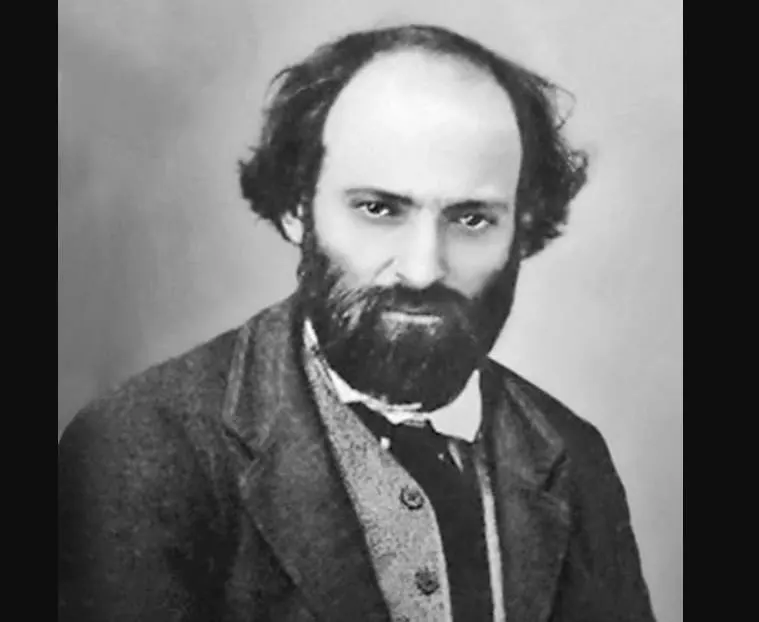
3. The paintings all slightly vary in different aspects

The artist spent most of the final years of his life in solitude in his “Atelier de Cézanne,” a place that has been transformed into a museum in his native Aix-en-Provence.
The Card Players was produced around the time that he started struggling with his health. Three of the works feature 2 card players while the other two only feature 2. All of them are different in size and color and feature different elements as well.
While the largest painting features 2 onlookers, this was reduced to just two in the other painting featuring 3 players. The onlookers were completely removed in the paintings with only two card players.
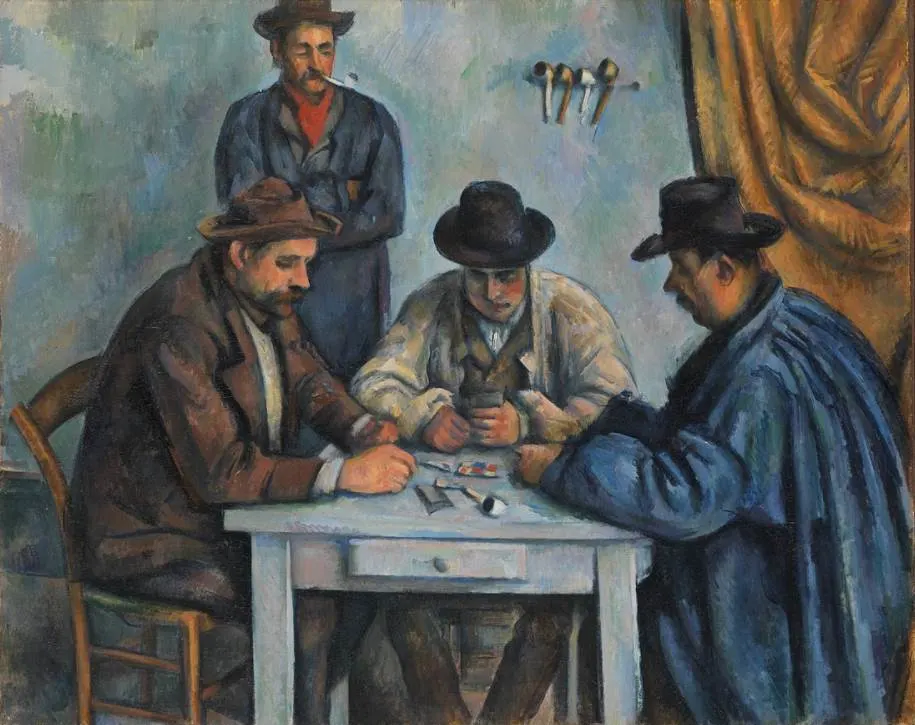
4. They resemble 17th-century genre paintings but with a twist
While it’s not exactly sure that Cézanne was inspired by Dutch Golden Age paintings of the 17th century, they do reminisce of the type of genre paintings that were common 2 centuries before he painted The Card Players series.
There’s only one difference with the Dutch paintings which is the fact that they weren’t portrayed as a jolly bunch playing cards or in a moment of intense drama as the game unfolds. Cézanne depicted the players in deep contemplation, staring at their cards without even looking at each other.
Despite the resemblance to 17th-century paintings produced by Dutch artists, it’s more likely that he was inspired by a painting of card players by the Le Nain Brothers. These French artists of the Baroque era painted a work that hung in Aix-en-Provence in the late 19th-century.
The contrast between the 17th-century tenebrist style inspired by the paintings of Caravaggio and the style of Paul Cézanne is quite interesting to admire.
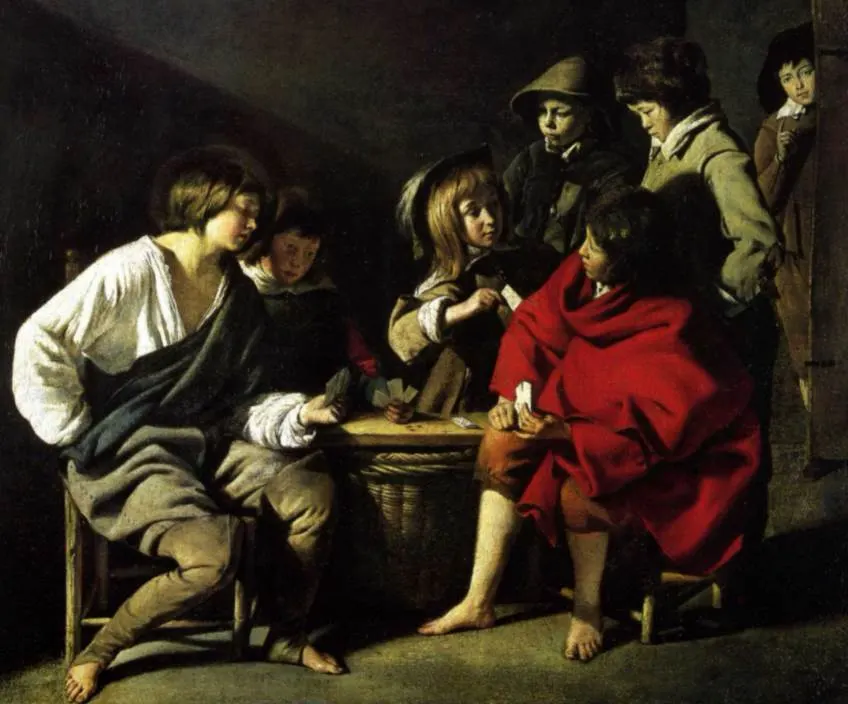
5. The largest painting of the series features the most figures
Whether or not the theory that Paul Cézanne painted the largest painting in the series first is true or not remains unknown. The idea behind that is that he stripped the largest version of the work from its essential as he deemed them unnecessary.
This left only the essential elements of the painting which are the two card players who are fully focused o the cards in their hands.
The largest painting is the most complex in the series as we can see both a man standing in the background who is watching the game and smoking a pipe and a woman sitting behind the card players.
These figures made the overall composition asymmetrical which is potentially the reason why he removed them in the final 3 versions of The Card Players.
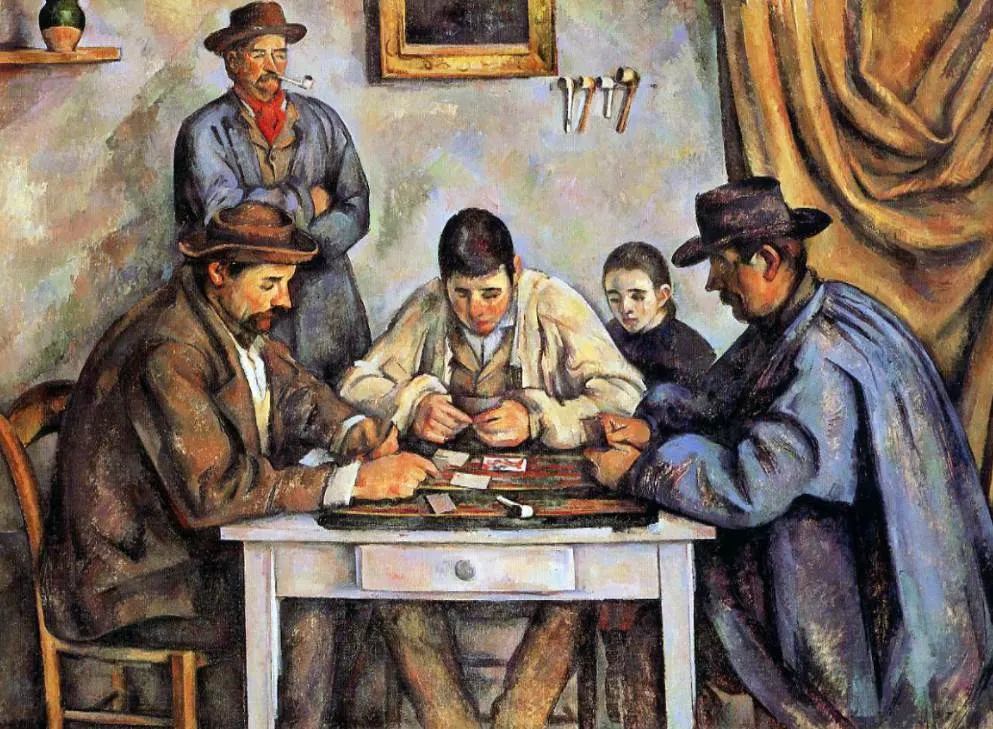
6. The artist made several preparatory drawings
The artist produced a large number of preparatory sketches and drawings to complete this remarkable series of 5 paintings. Over a dozen of these were made, quite a number.
These drawings include local farmers and are believed to have been produced at a tavern in Aix-en-Provence. It’s fairly certain that he subsequently used these sketches to produce the final paintings rather than having the models sit for them.
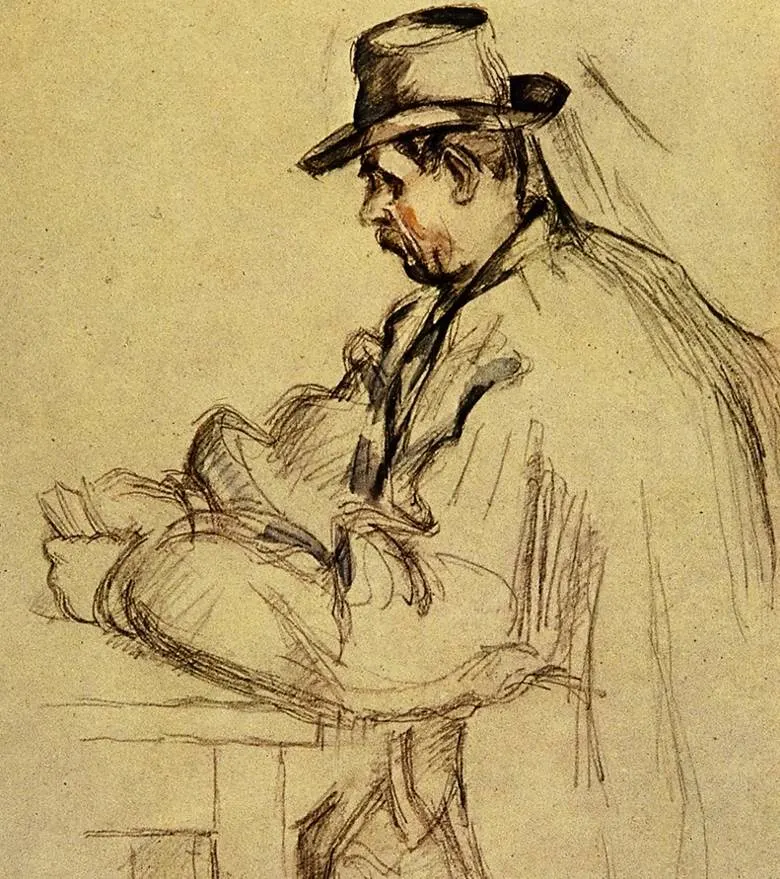
7. Some of the preparatory paintings are artworks in their own right
One of the remarkable things about these studies is that the theory in which order that the paintings were produced can be reversed as well. This would mean that he first completed the smaller versions and gradually included more figures in the larger paintings later on.
Equally fascinating is that the quality of some of these preparatory drawings is at an equal level to the main paintings in this series. This effectively turns them into standalone artworks as well. Especially the two versions of a man with a pipe qualify as such

8. How big are The Card Players by Paul Cézanne?
All 5 paintings in this series have different dimensions and the largest is significantly bigger than the other 4. Here’s an overview:
- Painting with 3 card players and 2 onlookers – 134.6 x 180.3 centimeters (53 × 71 inches)
- Painting with 3 card players and 1 onlooker – 65.4 x 81.9 centimeters (25.75 x 32.25 inches)
- Paintings with 2 card players – 97 × 130 cm (38 x 51 in) / 60 x 73 cm (23 x 28 in) / 47.5 × 57 cm (18 x 22 inches)
9. Where are the paintings located today?
The paintings have made their way all across the world and 4 of them can be admired in public museums:
- Barnes Foundation Museum in Philadelphia – 134.6 x 180.3 centimeters (53 × 71 inches)
- Metropolitan Museum of Art in New York City – 65.4 x 81.9 centimeters (25.75 x 32.25 inches)
- Private Collection – 97 × 130 centimeters (38 x 51 inches)
- Courtauld Institute of Art in London – 60 x 73 centimeters (23 x 28 inches)
- Musée d’Orsay in Paris – 47.5 × 57 centimeters (18 x 22 inches)

10. One of the paintings sold for a record amount in 2011
The only version that hasn’t been included in this list yet and which isn’t on public view in a museum is one that was sold back in 2011. This was the year that the Royal Family of Qatar bought one of the 5 paintings for $250 million.
This is the equivalent of approximately $290 million today and was the highest price ever paid for a painting until that time. This record wasn’t broken until 6 years later with the sale of Salvator Mundi, a presumed Leonardo da Vinci painting, that was sold for $450.3 million on November 15, 2017.
This certainly emphasizes the importance of this remarkable series of 5 paintings by Paul Cézanne.
